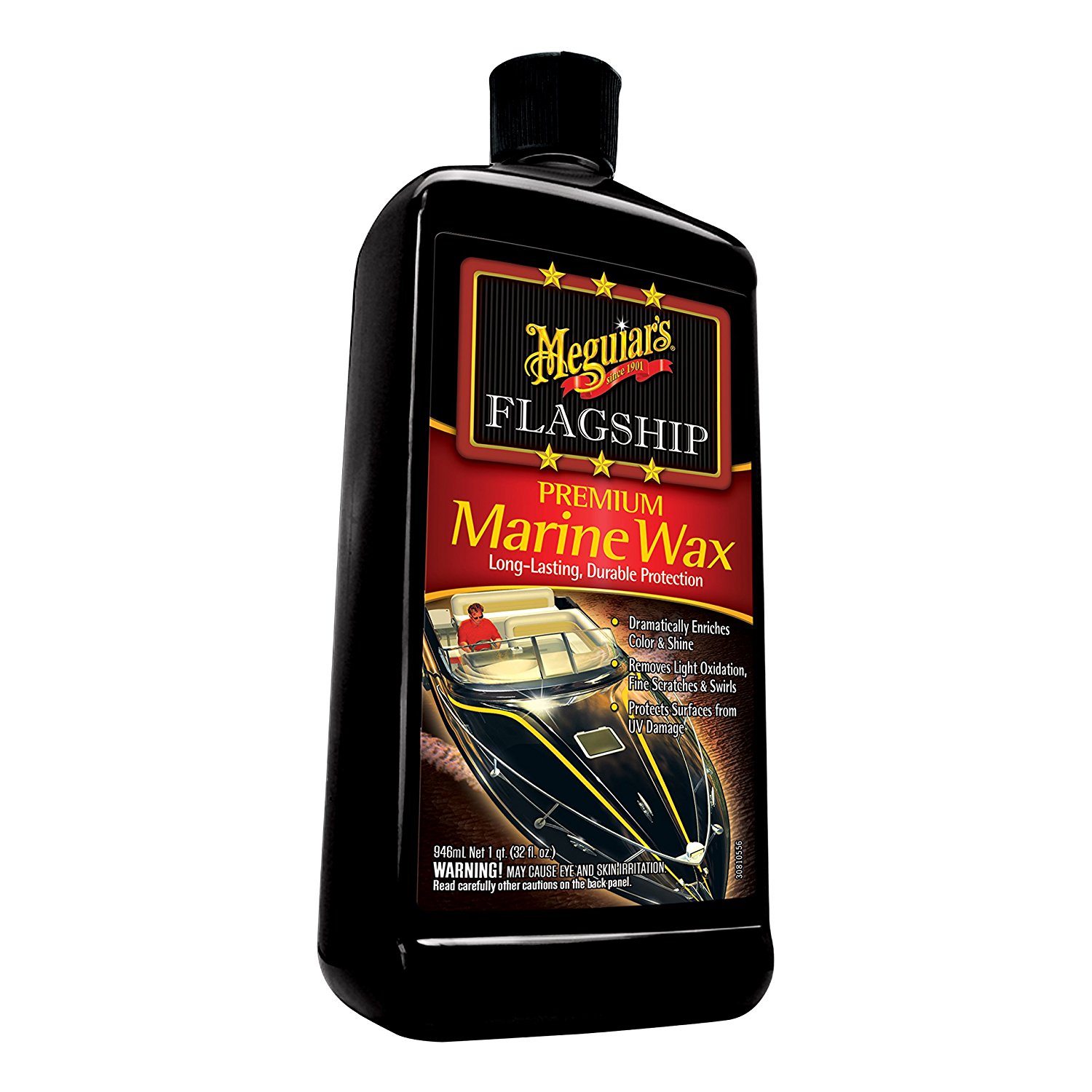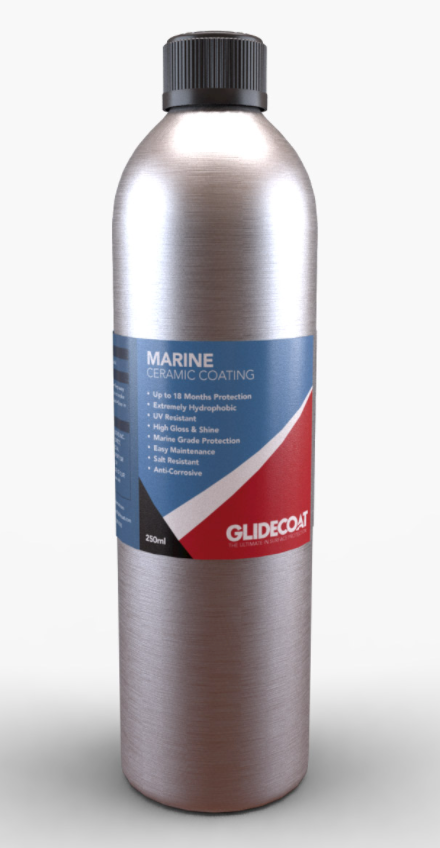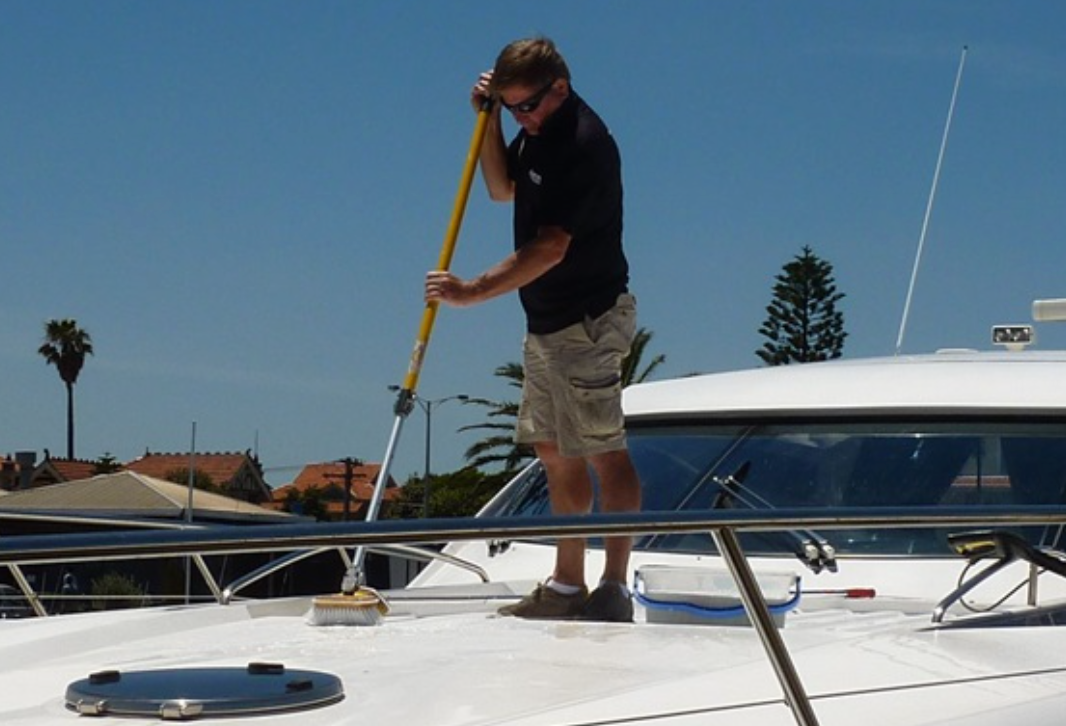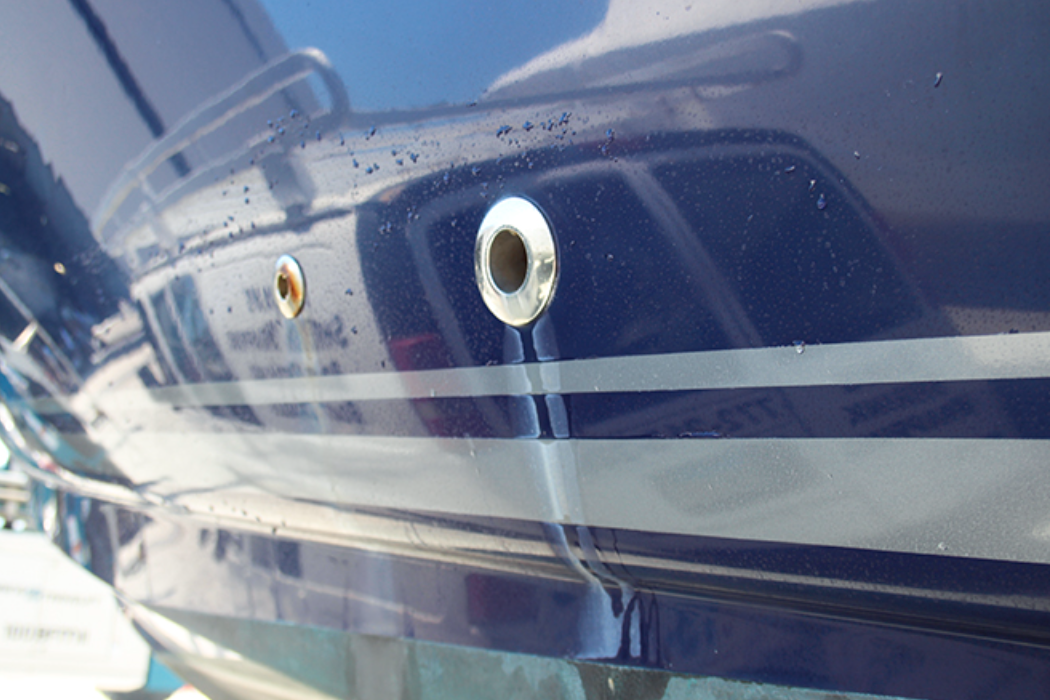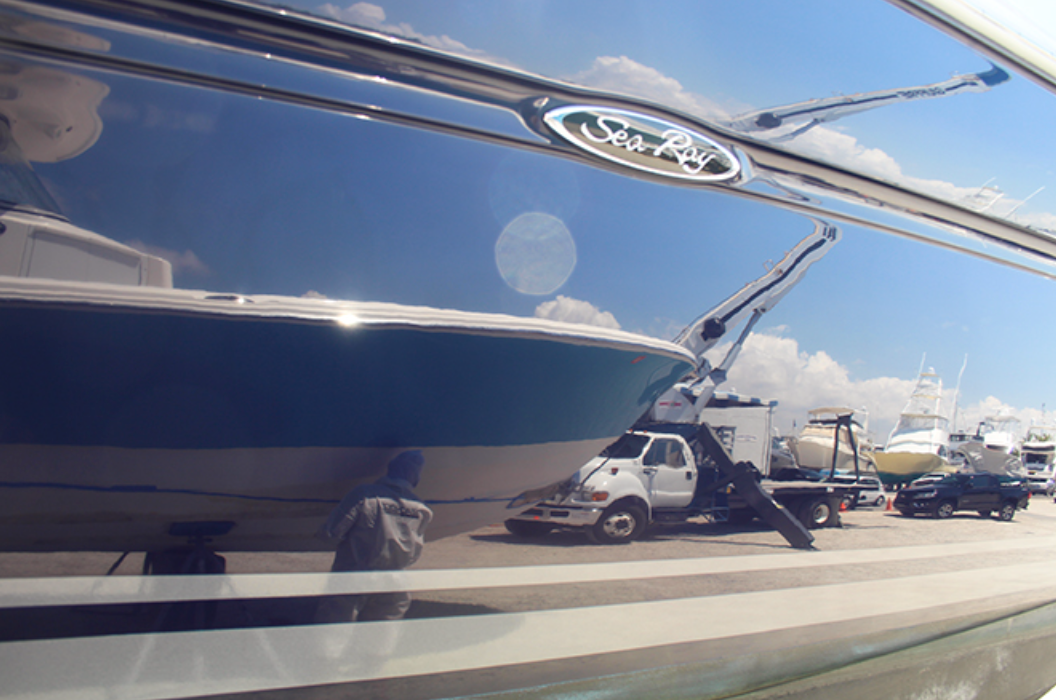Boat Coatings Explained
Mother Nature is brutal on boats. Sun, wind, water, and temperature have damaging effects to every material included in the boat’s structure and the goods brought on board. Wood, fiberglass, gel coat, paint, stainless steel, vinyl, plastic, fabric, nylon, wire, you name it, everything is affected by the environment, including the contaminants produced by humans.
It’s a known fact that boats, cars, cowboy boots, snowboards, windshields, skin, swim platforms, and most products do much better when protected by a coating, whether it’s wax, silicone polymer, nano-glass (ceramic), zinc oxide (for skin), or varnish. They repel water and provide lasting protection against the elements.
Cover it Up
Fiberglass boat hulls have a gel coat outer layer that creates a durable, water and UV-resistant shell that strengthens the fiberglass structure. However, gel coat is porous and susceptible to oxidation, stains, and contaminants. It needs a protective cover, a coating to keep it clean and shiny.
Coatings
Many different coatings are available to protect the boat’s hull—wax, sealant, and ceramic—and they all have variations in their own group. Gel coat is not the same as the clear coat applied over car paint and oxidizes much quicker. Even new boats will have some degree of oxidation even if there’s a shine. (To test it, take a wax and apply it to the worst-looking area, suggests Darren Priest, owner/operator of Auto Fetish Detail. If there’s any difficulty removing the wax, then it’s best to polish out the oxidation before applying boat wax to the rest of the boat.)
Wax: Wax has been around a long time, so there are lots of choices in the marine market. They almost all provide a similar level of gloss that will help increase the shine and offer a level of protection from dirt, saltwater, and ultraviolet light when applied to a clean surface. Natural wax is usually durable for six months.
Sealants: Sealants are chemically engineered to bond to the surface. They take a little more time to apply, but last longer than wax, about nine months to a year. Some add ingredients to remove old wax and residue when applied and provide a clear, hardened polymer barrier to reduce the slow fade induced from ultraviolet light as well as guard against salt and weather conditions. They can also be used on aluminum and stainless steel surfaces.
Ceramic: Ceramic coatings have become more commonplace in the marine market over the last few years because of its claim to last much longer than wax or sealants without re-applying, typically 18-24 months in southern states and 3-4 seasons up north. Ceramic coating is a liquid polymer made from ceramic nanoparticles (usually silicon dioxide or silicon carbide) that are suspended in a clear resin. When it hardens on the surface, it’s chemically bonded to create an impermeable layer that is semi-permanent, meaning it won’t come off unless it’s abraded.
There are many brands like wax and sealants. “The amount of silica dioxide in the ceramic is the difference between brands,” says Chris Stephan, owner/operator of Astroglaze Autoworks in Fort Lauderdale. “The more silica, the better.” Professional ceramic coatings usually contain 90% silica. However, the surface needs extensive preparation for it to secure properly.
Start Clean
Wax will add some shine and help protect the hull from harsh elements. The same is true with plastic polymer sealants as well as ceramic coating. The difference is in the product’s longevity; the similarity is that the surface must be clean when applied, even more so with ceramic as it is semi-permanent.
“Preparation is sometimes a tall mountain to climb,” says Stephan. If a boat is new, the mountain becomes a hill, but if there’s oxidation, stains, dirt, old wax, etc., start with a degreasing bath/wash. For ceramic coating, follow the cleaning with a clay block or mitt treatment using a clay lubrication. “The cleaning material is a clay lube,” says Stephan. “It feels like soapy water, but it’s a detail spray you can just wipe down. There are specific clay lubes, but you want to use a soft lube because the more abrasive ones will scratch. It’s super important to take your time and be thorough during this process.”
Compound buffing is next, and after that, use a priming polishing compound and different pads. Then prep the surface with liquid Prep-Sol (or 70% alcohol). “So many people skip or skimp on this part,” says Stephan. “All those buffing hours will go to waste. Each area treated with ceramic must be treated with some kind of liquid prep. This part removes any residual polish or anything. It’s now ready for ceramic coating.
Maintenance and Cost
Washing off the boat after use and wiping it down will help maintain the shine, but eventually, protective coatings will need re-application. Depending on how often you want to perform maintenance, the boat will need wax every three months or so and a ceramic coating will only need a touch-up (not a complete application) every year in order to keep it up to snuff.
Case Study
Glidecoat has studied the effects of ceramic coating on boats, cars, inflatables, airplanes, and even yacht propellers. They utilize a meter to measure the gloss on the surface. A factory new boat will register 82-88 on the scale.
On one 24’ (7.32 m) Sea Hunter, the initial reading was 9.7. Following the preparation steps, including the alcohol prep, Glidecoat applied two coats of its ceramic coating. After eight hours of curing time, the hull looked like glass and will provide protection up to 18 months. It was the same on a 2004 32’ (9.75 m) Regulator with a dark blue hull. The owner felt he saved about 30 percent in costs compared to what he was previously spending to maintain the boat.
There’s something to be said for the Zen that the wax on/wax off process offers some boaters, and it’s the least expensive way to protect the hull. But no matter what protective coating is used on the hull, none of it is worth it if it’s not maintained. If you want to avoid applying wax every few months, then ceramic may be the best choice. With upkeep, it will certainly last the longest.


